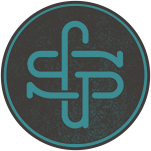What’s this series all about? Read Creative Contradiction #1.
2. Convergent and divergent. The folks with the most consistent creative output are thought to be using two contradictory yet complimentary modes of thinking: convergent and divergent.
Convergent thinking is logic, measured by IQ tests. It’s used to solve a definable problem and find its one right answer. Black and white. Cut and dry.
Divergent thinking, on the other hand, leads to no one conclusion but generates a mound of ideas and possible relationships between them. Central to divergent thinking is the ability to see associations between seemingly unrelated thoughts, and to see all sides or perspectives of an issue.
Most of my day is spent in divergent thinking. My wife asks me often, “Who are you talking to?” My mouth and hands move a lot when I’m driving or making breakfast. I’m dialoguing through songs, blog posts, conversations, pitches. It’s embarrassing but I can’t stop it. And I don’t want to really. It’s true that 99% of that mound of ideas created by divergent thinking is crap. But that 1% is golden.
Here’s an example of how these two kinds of thinking work together. One night I dreamed I was watching a hummingbird outside our kitchen window. I woke up thinking about hummingbirds and everything related to them. I wasn’t trying to. It just happened. By the time I got out of the shower a mound of hummingbird related stuff was piled up in my head. And it stayed there, with all the other piles, for weeks. Then one day, eating dinner before a show, someone said I looked tired. They asked me how I was doing. I told them I felt “run down.” And I don’t think I heard anything else anyone said at dinner from that moment on. Instead, my brain started connecting stuff in the pile about hummingbirds with stuff I was feeling. And in the next few days I wrote words like “Feathered, tethered, feels like all the world’s a cage/worked up, run down, in this race to earn a wage/something inside tells me I was made to split the sky, so tell me why I’m living like a hummingbird/getting nowhere fast from all this work…”
One dream and a morning of divergent thinking built the mound. And divergent thinking connected the mound to a seemingly unrelated thought/feeling. And convergent thinking went to work on the pile to find only the best stuff. Convergent thinking sifted the pile by saying “Yes” and “No”, “Keep it” and “Trash it” a hundred times until the song was done.
Now, beware. If a creative person’s divergent thinking is stronger than their convergent thinking, they’ll have lots of projects going on and few completed, lots of output but low quality standards. They’ll tend to think every idea is a great one. But, if their convergent thinking is stronger than their divergent thinking, they’ll be so self-critical (always saying “no” in their head) that they’ll have low output of a higher quality – at least in their mind. But, and I know this from experience at the moment, if convergent thinking is turned up to 11, output will end altogether.
Ideally, we creatives need both kinds of thought in balance.
If you live or work with creatives…
Does this help at all?
 Shaun Groves
Shaun Groves
keith says:
I’m looking forward to trying the last two bullet points.
Christine says:
More great stuff…I too am looking forward to the next installments.
What is it about the shower? Why does so much creativity, “pile sorting” and convergent thought crystallize in the shower? Is it because I can keep my hands busy with rote activity and allow my mind to wander? Is it the steam? The satsuma tangerine shower gel? The shower is nearly as important as prayer/meditation to keeping my brain organized and the creative activity prioritzed and moving forward.
Loren says:
What are you drawing from? I want to read it?
Biblefanmaryann says:
Yes it does. Thanks, Shaun!
susan says:
It helps.

For 6 mo’s we’ve been working on methods for ‘completing school work’ with our girlie who sees life in circles and stars while mom & dad are ‘box’ people. It’s a challenge.
It’s helpful to read another side to the ‘creativity mind.’
Esp. when we stare at each other and say ‘why did she just do that!’
David says:
Good post, Sean. The bit on “convergent” thinking probably explains why I have all of these creative ambitions but never actually get anything done.
Do not tell a creative person everything they have done or are doing is great. Great means nothing if it’s all we hear. And hearing it too often kills our ability to self-critique, to think convergently.
Does this mean I should be honest with you when a song sucks?
Unfortunately, I can’t say that about “Hummingbird”. It’s a great song. Sorry to disappoint you.
David says:
Whoops, I meant “Shaun”, not Sean. That’s what I get for thinking divergently while typing.
Biblefanmaryann says:
Haha, SEAN!
jen says:
Been a lurker here for a while. I never comment, because I am always reading days or weeks behind what you have currently written. I really, really enjoy your blog – just don’t have time to keep up!
This post was fantastic though! My sister is a creative who is a stronger divergent thinker, while I am a creative with a stronger convergent thinker…and it makes for some interesting discussions! Also have a kid who is crazy creative, and I am definitely going to be putting some of this into practice “on” her! Thanks for the ideas!